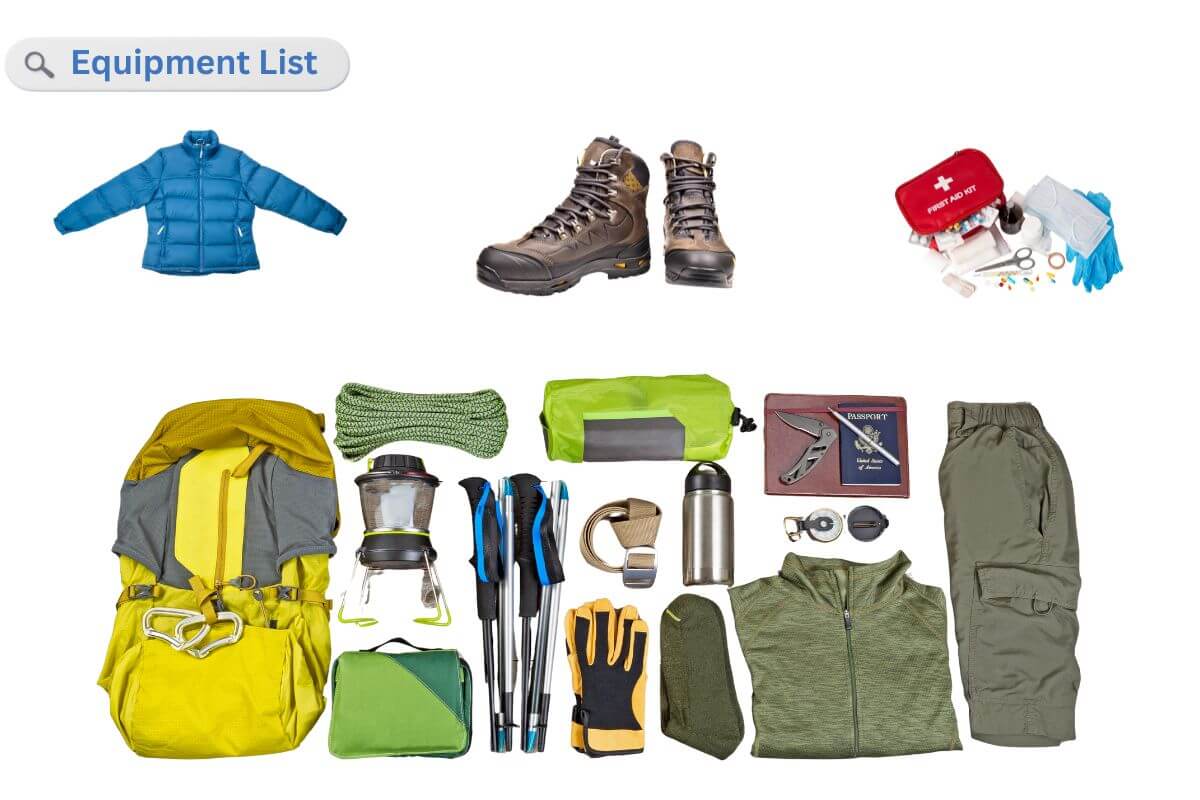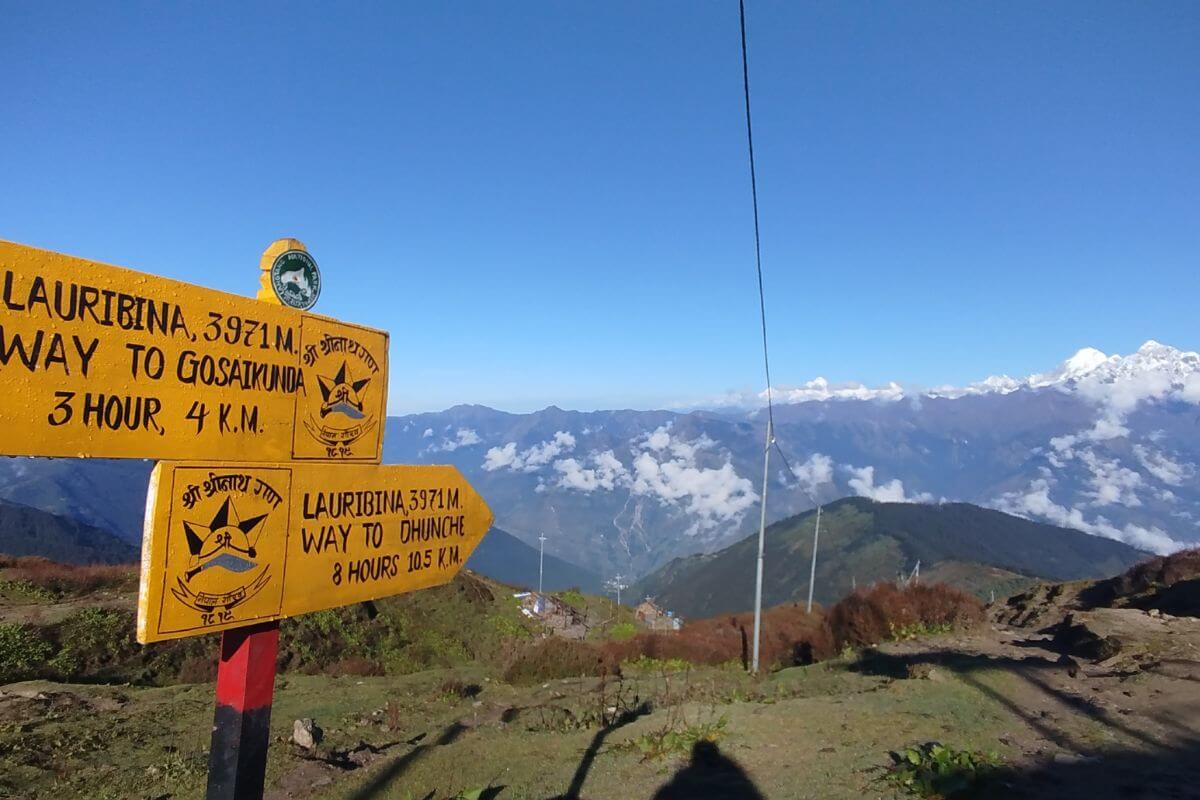Gosaikunda in winter is pure magic: a frozen lake, snowy trails, and no crowds. It's colder and tougher, but with the right prep, it's unforgettable. If you are up for the chill, it's totally worth it.
Trekking to Gosaikunda in Winter: Pros, Cons & Travel Tips
Table of Contents
Introduction
When people think of the Gosaikunda Trek, they usually imagine bright blue skies, rhododendrons, and cozy lodges along the trail. But honestly, the Gosaikunda trek in winter is completely different. The classic spring or autumn scene, sunny skies, blooming rhododendrons, and cozy teahouses with warm dal bhat.
But hey, trekking to Gosaikunda in winter? That’s a whole different mood. Think frozen lakes, snow-draped trails, and a kind of peaceful silence you won't find during the peak seasons. It's raw. It’s magical. And yeah, it's cold like crazy.
So, if you are wondering, “ Is Gosaikunda trek possible in winter? Or “ Can I actually walk on a frozen Lake?” Then keep scrolling. This blog is your go-to winter survival guide for the Gosaikunda trek.
What to Expect in Winter during the Gosaikunda Trek?
The highlights of this winter trek? Frozen. Gosaikunda Lake. Yep, it literally turns into a glassy sheet of ice surrounded by snow-covered peaks. You will feel like you are inside a Himalayan snow globe if you time it right (usually late Dec to mid Feb). You might even walk on the lake. Crazy, right?
As you gain altitude, the trail turns from rocky paths to soft blankets of snow. Pine forests look like they have been dusted with powdered sugar, and every turn gives you that “is this even real” vibe. Totally Insta-worthy, if you are into that. Winter is off-season,
so you won't be bumping into loads of trekkers. It’s just you, your squad ( or your solo vibe), and the Himalayas. Teahouses are open, but less crowded, with more blankets, better sleep, and deeper convos with the locals.
Is Gosaikunda Trek Possible in Winter?
Yes, you can do the Gosaikunda Trek in winter, but only if you go in with the right prep and the right mindset. It’s not your chill, laid-back kind of hike. This is an adventure into the snowy Himalayan wild, where everything’s quieter, colder, and more intense. But if you're into snow-covered peaks and the surreal experience of walking beside or on the Frozen Gosaikunda Lake, this trek is 100% worth it.
During winter, especially from mid-December to early February, the trails get covered in snow. Think icy sections, slippery slopes, and some deep snow, depending on recent weather. The Gosaikunda winter trek difficulty definitely goes up a notch compared to the spring or autumn seasons, but it's doable with the right gear.
Who should consider this trek in winter?
Perfect for you if:
- You have done some high-altitude trekking before
- You are okay with cold weather
- You want a peaceful, crowd-free Himalayan experience
- You are down for stunning frozen lake views and some extra challenge.
May be skip it if:
- You are a first-time trekker (save this one for your second or third trip)
- You hate the cold or get altitude sickness easily.
- You are not comfortable navigating snowy or icy trails.
Winter Weather Conditions-
Let's talk real. The winter temperature in Gosaikunda is cold. Like you will need multiple layers, that level of cold. In the daytime, the temperature ranges from 0 to 8 degrees Celsius. However, if the sun is out, it is pretty nice!. And at Night the temperature drops fast, expect 5 to 15 degrees Celsius.
The chances of snowfall are very high, especially higher up near Lauribina and the lake itself. Snow can fall anytime from late November to early March, but January tends to see the heaviest dumps. So yeah, you might wake up to a fresh, powdery trail, dreamy but slippery.
Winter skies are usually clear, which means epic mountain views. But storms can roll in outta nowhere. So, keep an eye on forecasts and give yourself buffer days just in case. And for the heads up, the Gosaikunda temperature in December/January is no joke. Make sure your gear game is strong.
If you’re unsure when the best time to trek to Gosaikunda, it’s worth checking before you pack timing can make or break your experience.
Required Gear for Winter Trekking
You can just throw on a hoodie and hope for the best, my dear trekkers. Winter trekking is equal to serious layering and gear hustle. For a detailed breakdown, check out our Ultimate Packing List for Gosaikunda Trek to make sure you’ll be fully prepared.
For clothing, the following are the essentials you should not forget during your trek to Gosaikunda in winter:
- Thermal base layers (top and bottom)
- Fleece jacket or mid-layer
- Insulated down jacket ( your best friend at -10 degrees Celsius)
- Waterproof outer shell ( for snow and wind)
- Wool socks, gloves, and a beanie that covers your ears
- Neck gaiter or scarf for those chilly gusts.
Footwear and Trail Gear
- Snow trekking boots with a solid grip
- Gaiters ( to keep snow out of your boots)
- Crampons/microspikes for icy stretches
- Trekking poles- total lifesavers for balance
Sleeping Essentials
- -10 degrees Celsius or lower-rated sleeping bag ( most teahouses aren't heated)
- Inner liner for extra warmth
- Hot water bottle (if the lodge can provide boiled water)
Recommended Winter gear checklist
- Headlamp
- Sunglasses
- Sunscreen and lip balm
- Reusable water bottle and water purification tabs.
- Power bank
- First aid kit

Safety Tips for Winter Trekking
Let's be real: the Gosainkunda trek in winter is stunning, but also tougher than your average hill walk. Safety isn't optional; it's the whole game. Here is what you gotta keep in mind to stay safe and sane on the trail:
Start early, avoid hiking in the dark
Winter days are short and cold. Like, Blink and its sunset are kind of short. So start your hike early, like by 7:30 AM at the latest. Trust us, you don't want to be finding your way through snowy mountain trails in the dark. It’s colder, iskier, and just not worth the stress.
Be aware of frostbite and hypothermia.
Yeah, it's not just a movie thing. Frostbite and hypothermia are very real threats when you are hiking in freezing temperatures. The Gosaikunda temperature in December / January can drop way below -10 degrees Celsius at higher elevations like Laurebina or Gosaikunda itself. Make sure to:
- Cover all skin (especially fingers, toes, ears)
- Start dry (wet clothes = hypothermia magnet)
- Move consistently (don't just sit in the cold)
Importance of guides and weather updates
If you are asking, “Is the Gosaikunda trek possible in winter?” the answer is yes, but only if you are prepared and informed. Hiring a local guide is smarter and safer. They know:
- Where the trail’s icy or blocked
- Which teahouses are open
- What weather is rolling in
Accommodation and Food in Winter
Now, let’s talk about one of the biggest “ will I survive?” questions: food, and where to sleep during the Gosaikunda trek. Many teahouses stay open in winter, especially at lower stops like Dhunche, Chandanbari, and Laurebina. But as you go higher, especially close to the Frozen Gosaikunda Lake, some places might be closed due to snow or no of tourists.
What’s cooking in the Mountains?
Food is pretty standard and comforting. Expect:
- Dal bhat ( the ultimate power meal)
- Noodles, fried rice, soup
- Tea (lots of it; ginger, black, lemon, milk)
- Sometimes, Mom, if you are lucky
Hot meals help fight off the cold. But be patient, cooking takes longer in high-altitude cold. Carry Energy snacks like protein bars, nuts, trail mix, or chocolates, and reusable water bottles and electrolyte tablets.
Trek Route Overview in Winter
So what’s the actual route like for a Gosaikunda winter trek? The classic route from Dhunche to Gosaikunda is recommended for the winter. This route is still walkable in winter, but it's longer and harder because of snow and slippery sections, especially from Laurebina to Gosaikunda. Some of the key stops that you will love are:
- Dhunche (1,950 m): Gateway town, permits, snacks, cozy vibes
- Chandanbari/ Sing Gompa (3,300m): Great place to acclimatize; there’s a cheese factory too.
- Laurebina (3,910m): Epic mountain views; it gets snowy here
- Gosaikunda (4,380m): You made it! Hello, Frozen Gosaikunda Lake.
How does snow affect the trail difficulty?
The Gosaikunda winter trek difficulty level jumps a bit in the snow:
- Trails take longer (snow slows you down)
- Some steep areas (like before Larebina ) can be icy or hidden under snow
- You will need crampons/ microspikes in some sections
But don't worry, it’s totally doable ig you are prepped and not rushing. The best month for a frozen Gosaikunda Lake is between December and early February, when the lake is solid, the skies are clear, and snow blankets everything.

Permits and Preparation
Just because it’s winter and the trails are quieter doesn’t mean you can skip the official stuff. Permits are still a must for the Gosaikunda winter trek, and skipping them is a big no-no. Here’s what you need to know: our guide on Gosaikunda Trek Permits Explained: Costs, Location & Requirements covers everything in detail, and below is some information you need to know.
Permits Required
- Lamgtang National Park Entry Permit: This gives you access to the park area.
- TIMS Card (Trekker’s Information Management System): Mandatory for all trekkers, even in off-season.
Don't try to trek without these; there are regular checks along the way, and fines aren’t fun when you’re cold and tired.
Where to get the Permit?
- Both permits can be arranged in Kathmandu at the Nepal Tourism Board office (Bhrikutimandap)
- You can also get the Langtang NP permit at the Dhunche checkpoint, but it’s easier to sort everything in KTM before heading out.
Prepping for the Winter Challenge
Look, Gosaikunda trek in winter isn’t just a walk in the snow; it’s a legit physical and mental challenge. But it’s 100% doable if you prep the right way:
Physically;
- Do some hikes or stairs with a loaded backpack before the trip.
- Add cardio and leg workouts to your routine; those climbs can get spicy with snow.
- Practice walking in cold weather to get used to the chill.
Mentally:
- Expect delays. The weather changes fast
- Be ready for freezing mornings and shorter daylight hours.
- Understand that the Gosaikunda winter trek difficulty goes up a notch, so embrace the challenge!
Conclusion: Is Winter Trekking Right for You?
So, is trekking to Gosaikunda in winter worth it? Totally, if you are up for a bit of cold and a whole lot of magic. With fewer crowds, stunning snow-covered trails, and the surreal sight of the Frozen Gosaikunda lake, it’s a winter adventure that hits different.
Yes, the weather can be intense and the trek a bit tougher, but with the right prep and mindset, it’s 100% doable. If you are someone who craves peace, challenge, and unforgettable mountain views, this winter trek might just be your next big move.
Trekking to Gosaikunda in winter is a wild, cold, and beautiful experience that not everyone gets to feel. If you go in prepared gear-wise, permit-wise, and mindset-wise, you are in for one of the most underrated Himalayan adventures out there. Just respect the mountains, pack smart, and go with caution and curiosity.

.webp)

.webp)
.webp)
.webp)